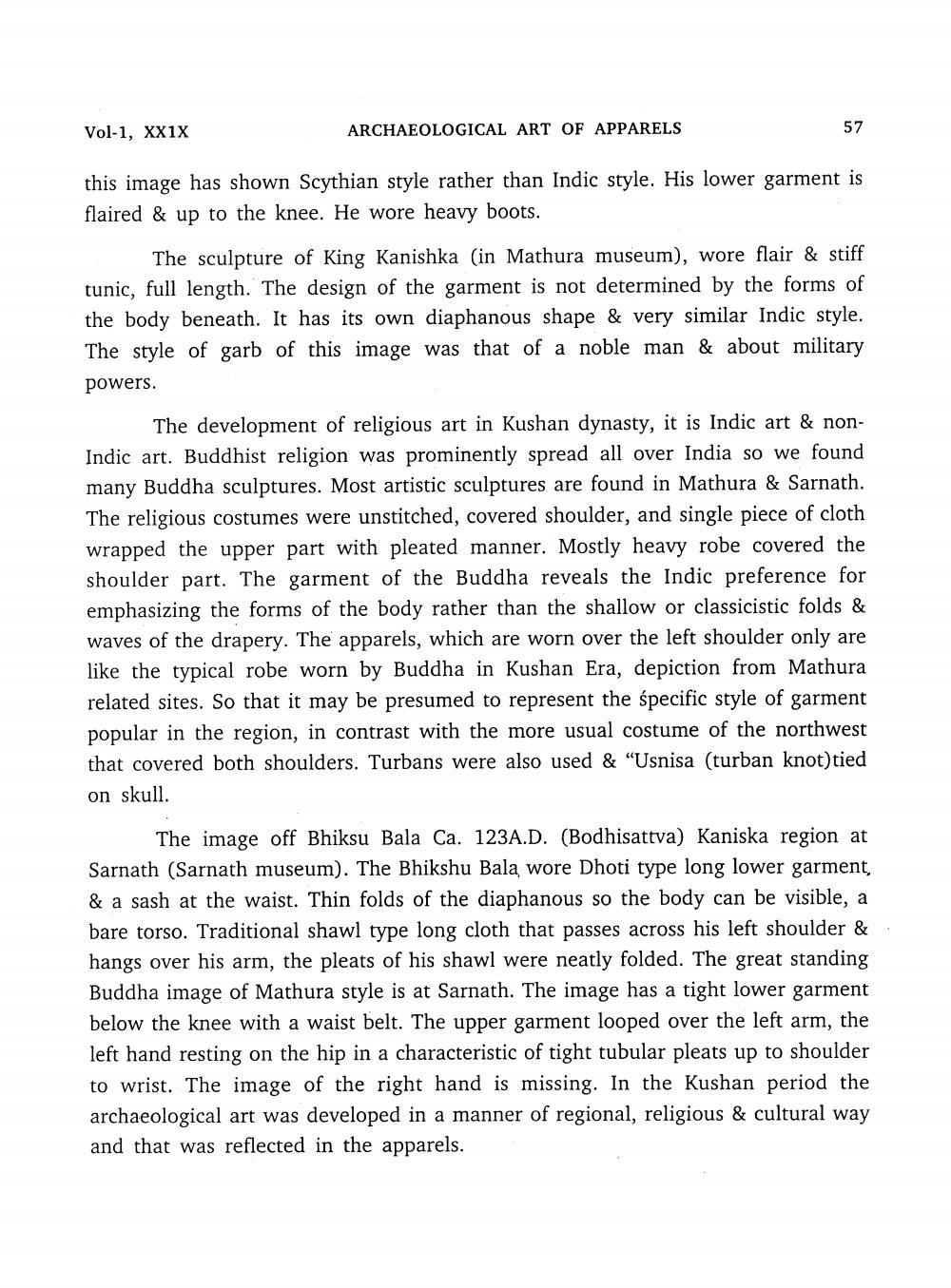________________
Vol-1, XX1X
ARCHAEOLOGICAL ART OF APPARELS
57
this image has shown Scythian style rather than Indic style. His lower garment is flaired & up to the knee. He wore heavy boots.
The sculpture of King Kanishka (in Mathura museum), wore flair & stiff tunic, full length. The design of the garment is not determined by the forms of the body beneath. It has its own diaphanous shape & very similar Indic style. The style of garb of this image was that of a noble man & about military powers.
The development of religious art in Kushan dynasty, it is Indic art & nonIndic art. Buddhist religion was prominently spread all over India so we found many Buddha sculptures. Most artistic sculptures are found in Mathura & Sarnath. The religious costumes were unstitched, covered shoulder, and single piece of cloth wrapped the upper part with pleated manner. Mostly heavy robe covered the shoulder part. The garment of the Buddha reveals the Indic preference for emphasizing the forms of the body rather than the shallow or classicistic folds & waves of the drapery. The apparels, which are worn over the left shoulder only are like the typical robe worn by Buddha in Kushan Era, depiction from Mathura related sites. So that it may be presumed to represent the specific style of garment popular in the region, in contrast with the more usual costume of the northwest that covered both shoulders. Turbans were also used & "Usnisa (turban knot) tied on skull.
The image off Bhiksu Bala Ca. 123A.D. (Bodhisattva) Kaniska region at Sarnath (Sarnath museum). The Bhikshu Bala wore Dhoti type long lower garment, & a sash at the waist. Thin folds of the diaphanous so the body can be visible, a bare torso. Traditional shawl type long cloth that passes across his left shoulder & hangs over his arm, the pleats of his shawl were neatly folded. The great standing Buddha image of Mathura style is at Sarnath. The image has a tight lower garment below the knee with a waist belt. The upper garment looped over the left arm, the left hand resting on the hip in a characteristic of tight tubular pleats up to shoulder to wrist. The image of the right hand is missing. In the Kushan period the archaeological art was developed in a manner of regional, religious & cultural way and that was reflected in the apparels.




